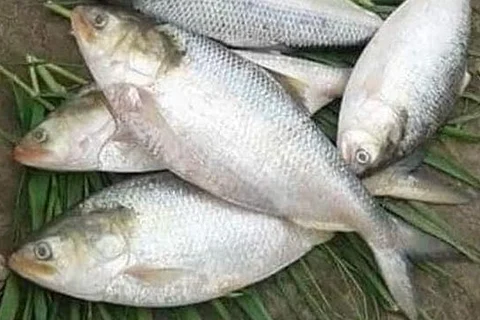

The onset of the monsoon season has pushed the demand for the rare ‘Pulasa’ fish, pushing up the price to as much as Rs 20,000 or even more. Pulasa is the most expensive fish and is known for its subtle distinctive flavour in Andhra Pradesh. The fish got the name, ‘Pulasa’ from the dish, Chepala Pulusu, translated as fish curry, famous for its distinct taste. Its widespread popularity can be inferred from the fact that customers even pay fishermen in advance ahead of the season. Families in the coastal region of Andhra consider Chepala Pulusu to be a royal dish and some even give it as a gift to influential people.
The fish is scarce, found only in the Godavari region between July to early September. Also known as ‘Hilsa’, this seawater fish migrates to estuaries to breed during the monsoon season. Estuaries are coastal water bodies where the land transitions to the sea and freshwater from rivers and streams mixes with salt water from the ocean. The fish die after the breeding season, so one must catch the fish at the ideal time. The fish undergoes changes as it moves from saltwater to freshwater, which enhances its flavour. One kilogram of fish can sell for as much as Rs 4,000 in the Godavari region's local markets. The fish is frequently auctioned by fishermen and it can fetch up to Rs 20,000 per fish. Social media posts about the prices of Pulasa fish go viral, further promoting the variety.
Speaking to TNM, Visakhapatnam Fisheries Department Director Vijaya further explains the reasons for the scarcity of the fish. “The fish migrates to upstreams of rivers during monsoon season. The muddy waters of the Godavari river promote breeding. The fishlings or baby fish migrate back to the ocean and only come back during the monsoon season to breed.” She adds that Pulasa is available in some parts of Orissa, but Godavari Pulasa is costlier due to its taste and popularity. “The fish is scarce because it is going extinct, and it is available only in small quantities,” Vijaya says.
According to a Times of India report, the population of the Pulasa variety is declining due to overfishing, pollution, and a lack of conservation efforts. The report suggests that fishermen catch premature fish due to the high price it fetches, leading to an abnormal decrease in catch.
“The government should take an interest in research and development. A study must be done on management and conservation issues,” P Srinivas Rao, a Zoology researcher told TOI.